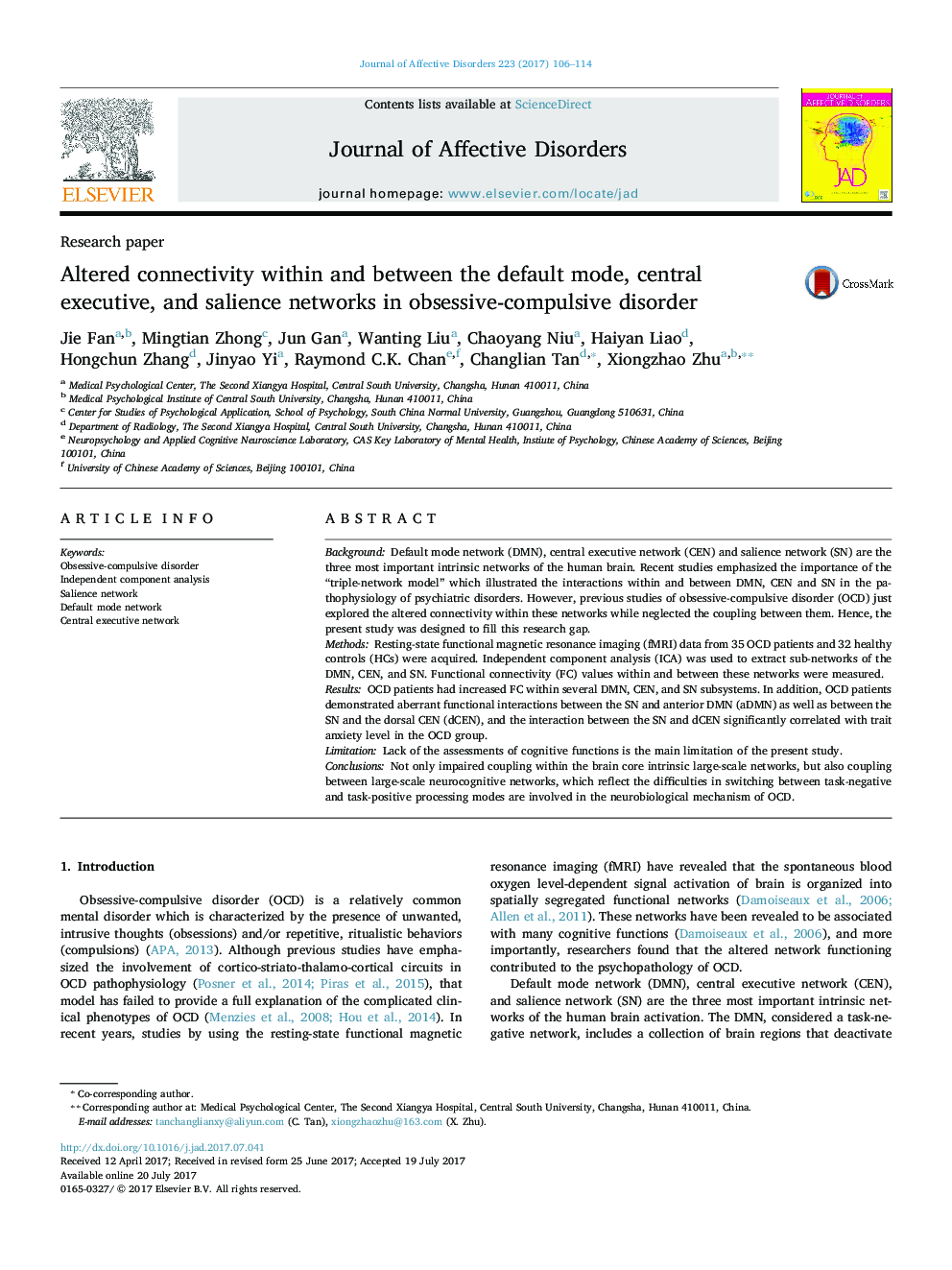| Article ID | Journal | Published Year | Pages | File Type |
|---|---|---|---|---|
| 5721799 | Journal of Affective Disorders | 2017 | 9 Pages |
â¢We examined the functional connectivity between and within SN, DMN, and CEN in OCD.â¢Patients with OCD had altered SN-anterior DMN and SN-dorsal CEN interactions.â¢Patients with OCD had increased FC within several SN, DMN, and CEN sub-networks.â¢Difficulties with switching between CEN and DMN are involved in OCD psychopathology.
BackgroundDefault mode network (DMN), central executive network (CEN) and salience network (SN) are the three most important intrinsic networks of the human brain. Recent studies emphasized the importance of the “triple-network model” which illustrated the interactions within and between DMN, CEN and SN in the pathophysiology of psychiatric disorders. However, previous studies of obsessive-compulsive disorder (OCD) just explored the altered connectivity within these networks while neglected the coupling between them. Hence, the present study was designed to fill this research gap.MethodsResting-state functional magnetic resonance imaging (fMRI) data from 35 OCD patients and 32 healthy controls (HCs) were acquired. Independent component analysis (ICA) was used to extract sub-networks of the DMN, CEN, and SN. Functional connectivity (FC) values within and between these networks were measured.ResultsOCD patients had increased FC within several DMN, CEN, and SN subsystems. In addition, OCD patients demonstrated aberrant functional interactions between the SN and anterior DMN (aDMN) as well as between the SN and the dorsal CEN (dCEN), and the interaction between the SN and dCEN significantly correlated with trait anxiety level in the OCD group.LimitationLack of the assessments of cognitive functions is the main limitation of the present study.ConclusionsNot only impaired coupling within the brain core intrinsic large-scale networks, but also coupling between large-scale neurocognitive networks, which reflect the difficulties in switching between task-negative and task-positive processing modes are involved in the neurobiological mechanism of OCD.
